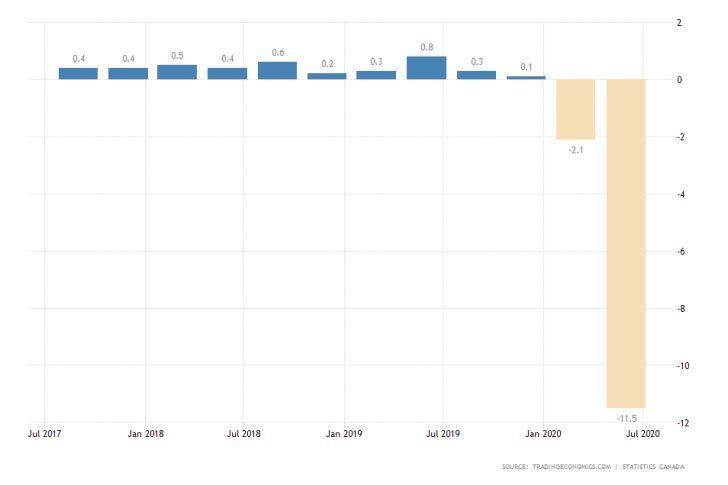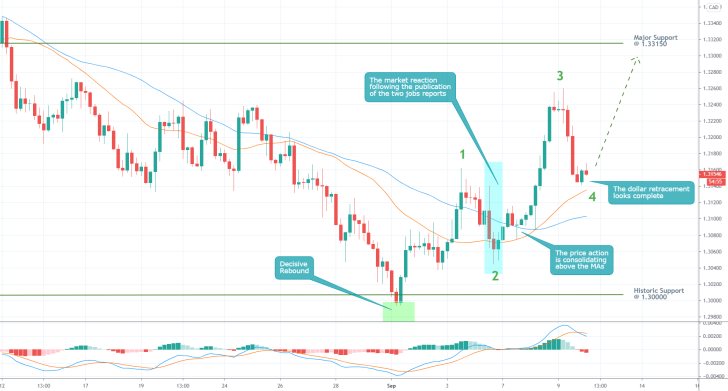
At a highly anticipated monetary policy meeting yesterday, the Governing Council of the Bank of Canada expectedly decided to maintain the Overnight Rate unchanged at 0.25 per cent.
Additionally, the Council promised to carry on with its accommodative quantitative easing (QE) programme, with 'large-scale purchases of at least $5 billion per week Government of Canada Bonds'. The decision was largely inspired by current trends in global finance.
In its post-decision statement, the Governing Council reviewed the most recent economic and financial developments in Canada and abroad. As regards the international outlook, the Council pinpointed the faster-than-expected pick-up in US economic activity as a welcoming global development.
Current economic developments in Canada are largely driven by the pace of easing of Government restrictions, as the Council acknowledged a slow transition in the general recovery from the continued easing of epidemic restrictions to 'choppy and uneven recuperation of economic activity'.
The massive GDP slump in Q2 was cited as a major impediment for growth, though the rebound in overall economic activity is expected to alleviate some of the pains for the Canadian economy by the end of the year.

The Governing Council of the BOC did not bring anything new to the table during its September meeting, in a sense that the Council did not deviate drastically from its course that was undertaken in the wake of the coronavirus crash.
Near-negative inflation remains a primary concern for the Bank, which allows it some leeway in continuing to implement its extensive QE programme. By keeping borrowing costs low, the Council intends to support price stability in the economy by ensuring that households and businesses continue to have easy access to capital.
The somewhat dovish rhetoric of the BOC, particularly concerning the Governing Council's expectations for an even recovery, is likely to exert some pressure on the loonie.
Meanwhile, the greenback looks ready to rebound from yesterday's dip and continue developing its recent bullish run. As can be seen on the 4H chart below, the USDCAD reached a new swing low and is currently consolidating above the 30-day MA (in orange).
This is the second retracement leg in what looks like a newly emerging 1-5 impulse wave pattern, as postulated by the Elliott Wave Theory. The next impulse leg (4-5) is thus likely to drive the price action higher towards the major resistance level at 1.33150.

Trendsharks Premium
Gold is undergoing a correction, as investors take profits to offset losses from falling stock prices, impacting their margins. However, we anticipate a renewed wave of [...]
The Swiss stock market index is mirroring its global counterparts, such as Germany 40 and US100, experiencing a sharp decline following the announcement of new [...]
We’re analyzing the weekly chart to grasp the broader market trend. Over the past three years, the US30 index has surged by 17,000 points, often resembling a nearly straight [...]
Over the past week, the DAX has experienced a sharp decline, plunging by an astonishing 3,400 points. This downward movement is not isolated, as its international counterparts, such as the UK100 and US100, are also facing significant [...]
EURUSD recently formed a double top at 1.0930, signaling a potential trend reversal, and has since begun a correction. After a 600-pip rally since early March, a pullback at this stage is both expected and healthy. Given these conditions, we are placing a [...]
Since early March, EURJPY has surged nearly 1,000 pips, providing us with several excellent trading opportunities. However, as the rally matures, many early buyers are beginning to take profits, leading to a noticeable slowdown in the uptrend. On Friday, the pair formed a [...]
The AUDJPY currency pair continues to be dominated by bullish momentum, as multiple golden cross patterns reaffirm the strength of the ongoing uptrend. Despite this, we are witnessing a much-needed [...]
The EURAUD currency pair appears to be undergoing a trend reversal, signaling a potential shift in market direction. A notable technical development is the formation of a Death Cross on the chart, a widely recognized bearish indicator that typically suggests a [...]
After securing an impressive 200-pip profit last week, the EURJPY currency pair is now undergoing a southward correction, retracing some of its recent gains. Despite this temporary pullback, the Golden Cross remains intact, reinforcing our view that the overall trend continues to be [...]
The appearance of a Golden Cross in Silver strengthens our analysis that the metal is currently in a strong uptrend, indicating further bullish momentum in the market. This technical pattern, where the short-term moving average crosses above the [...]
This trade presents a considerable level of risk and can be classified as an opportunistic move based on recent price action. The GBPUSD currency pair has experienced a substantial bullish rally, surging by nearly 500 pips in a strong upward movement. However, after this extended period of appreciation, the pair is showing signs of a potential [...]
The anticipated Death Cross on the SMI20 appears to be failing as price finds strong support at the 23% Fibonacci retracement level. After testing this area, the index has shown bullish strength, printing several large green candles, signaling an increase in [...]
A Golden Cross has just appeared on the USDJPY chart, signaling a potential bullish move. This technical pattern occurs when the 20 period moving average crosses above the 60 period moving average, a widely recognized indication of increasing [...]
After 2 months of a down trend, we finally see some indications of price recovery for Oil. The golden cross, a historic buy signal, supports this [...]
For the past month, the German DAX40 has experienced a remarkable 10% surge, reflecting strong bullish momentum. Despite ongoing market volatility and frequent pullbacks, every dip continues to attract fresh buyers, reinforcing the [...]
Oil continues its downward trajectory, despite occasional pullbacks. The overall trend remains bearish, reinforced by multiple Death Cross patterns, a classic sell signal indicating further weakness. Adding to this bearish outlook, the critical [...]
Over the past few days, gold has experienced a sharp decline of more than $100. This downturn can be attributed in part to traders securing profits to manage their margins, which are under strain due to the significant drop in major indices. Currently, gold has fallen below the [...]
The NASDAQ 100 index is showing strong bullish momentum, as evidenced by the formation of a Golden Cross on the chart. This classic buy signal occurs when the short moving average crosses above the long term moving average, suggesting that upward momentum is [...]
The EURAUD currency pair has encountered a significant resistance level, failing to break above the critical 61% Fibonacci retracement level. This suggests that bullish momentum is weakening, reinforcing the case for a potential downward move. Given this technical setup, we favor entering a [...]
The UK100 is experiencing a remarkable rally! Over the past few weeks, the British stock market index has surged nearly 800 points. Each minor dip has attracted more buyers, fueling the bullish momentum. However, since last week, we’ve observed a slight [...]




















